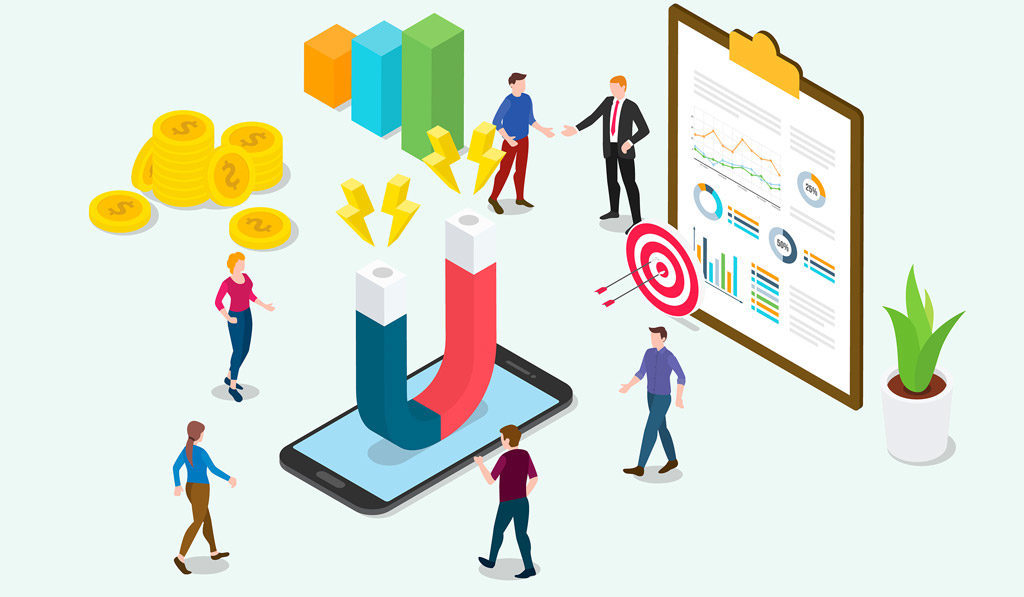
According to this great quote from Sam Walton, “There is only one boss. The customer – and he can fire everybody in the company from the chairman on down, simply by spending his money somewhere else.”
Great customer service is just the first stage, but by making sure you build in analytics and other ways of measuring this success, their hard work and effort can be quantified and your outstanding customer support teams progress can be measured.
So, what makes a great customer support team? Let’s take a look at the brief answer below.
Building a customer support strategy? Building ways of measuring the success of your customer service teams, such as initiate KPIs, customer surveys and finding accurate methods of qualifying your social media strategy, you will be able to build a great team. For ongoing success, make sure their efforts are rewarded.
Now we’ve seen the short answer as to building a successful customer service team, let’s take a look below at how best you can make sure you capture, analyze and report on their work, in order to be able to reward your hard-working team.
Key Performance Indicators are extremely important in gathering the information required to really make sure you’re providing the best customer service that you can. Each metric has its specific uses and can report on specific audiences and demographics. It’s down to you to employ these in a way that works best for your business.
Finding ways to keep your customer service in line with the ever-growing expectations, from the fledgling Generation Z, their older siblings, the millennials and every other single customer you attract, is paramount to the growth and sustainability of your business.
So, let’s take a look below at some ways in which you can evaluate your customer service team and then find new and innovative ways of rewarding them.
How to evaluate customer service agent performance?
Whichever metrics you choose to measure based on your goals; they should always be:
- Real – Reports are not effective if they aren’t telling the true story. Be honest, it might not give the answers you want, but it will help going forward to take positive action.
- Actionable – Make sure you are reporting on activities with changes that are actually possible for your teams to improve upon. Don’t be swayed by vanity numbers that may be meaningless.
- Consistent – by concentrating on consistency reporting, you will be able to capture trends, which means you will be able to spot the places your team may need to improve. Looking back at trends can give you some great insights.
Setting customer service KPI
Key Performance Indicators help you measure performance versus set goals. They offer the chance to understand the impact of your team’s effectiveness.
As with any performance indicators, the definition of good customer service metrics varies immensely across industries, customer demographics, and geographic regions, so make sure you don’t simply have a ‘one size fits all’ mentality.
The most effective way to benchmark your performance is to do it against your own numbers. Are your metrics better than they were last week? Last month? This is the best way of securing true data.
For example, if your customer service data show that increasing customer engagement by 50% leads to an 80% improvement in customer retention, It might then be sensible to focus on setting customer engagement benchmarks to achieve higher retention rates.
KPIs can identify issues in need of addressing. Measuring customer satisfaction across multiple touch-points may reveal phone users are the least satisfied, whereas those using live chat are extremely satisfied.
It makes sense then to incorporate live chat across all possible touch-points and encourage phone users towards live chat where they are likely to have a better experience.
“The most effective way to benchmark your performance
is to do it against your own numbers.”
Customer satisfaction surveys
A great way for customers to provide feedback is with a customer satisfaction survey.
After you’ve gathered satisfaction, more commonly known as CSATratings, there’s much that your managers and team leaders can do with the data and can be viewed from many angles.
We decided that CommBox would also provide a great way to measure customer feedback. Using our unique customer satisfaction module.
Below are a few ways you can use your data to improve performance.
- A customer’s CSAT rating over time
- Average CSAT ratings for agents and teams
- CSAT ratings, by product or service
- CSAT ratings, by customer types
- CSAT ratings, by channel
- CSAT ratings, by product or service
Other companies might use metrics called Customer Effort Score or CES. Many companies that use the CES typically use it instead of CSAT ratings
Some companies move to CES after having used CSAT, when they’re satisfied that they’ve gathered all the useful customer service feedback possible from their surveys.
Whether you use CES or CSAT; focusing on effort reduction should be one of your team’s primary goals to improve the customer experience and overall improved customer satisfaction as a result of your findings.
To get to a much more expansive customer relationship story, taking findings beyond simply single support interactions, there’s also Net Promoter Score or NPS.
The NPS survey helps companies understand if the customer is likely to return, stay loyal, and advocate for the brand to others. The Net Promoter Score asks how likely customers are to recommend our business to someone else.
“Many companies that use the CES typically use it instead of CSAT ratings”.

Effective use of social media
Are you using social media for customer service in the right way for your business? Social media is equally as, if not becoming more and more important in your customer service strategy, and can slot right into CommBox directly.
Facebook and other forms of social media is an open platform on which your customers are more likely to be every evening, possibly lunchtimes and many other times of the day, rather than at the end of a phone or emailing your customer service team.
Making sure you give social media the qualification and strategy it deserves is paramount if you want to keep competitive.
Reply as quickly as possible on social media.
Most forms of customer support via phone and email are not typically expected to be available 24/7. Yet, social media customer support has created an always available expectation.
As a result, 42% of consumers expect a response on social media within 60 minutes.
This means responding to inquiries, reviews, and complaints as quickly as possible is the best social media customer service strategy.
The effects of poor response time for customer service through social media are real and can cause havoc with your attempts to train and build exceptional service teams.
If you aren’t monitoring or finding ways to capture data from this important area, you may find your customers will do the following:
- Complain publicly via social media
- Not recommend a brand’s products or services
- Tell their family and friends about the experience
- Use another channel to escalate their concerns again
- Buy less from a company in the future
Although it may not have the ability or resources to monitor social media accounts 24 hours a day, there are many programmable messenger ‘bots’ and customizable away messages available for out of hours, which will give you quick and effective options for providing all-important customer service on Facebook.
Two really important points to consider are:
- Every post, review, and check-in on social media needs acknowledgment.
- Respond to all social media feedback, questions, and comments.
This is also why we made sure you have the option to access and manage all your social media channels directly from within CommBox.
Since so many comments can be viewed by the public, businesses have an incentive to be attentive to everybody via social media.
It can be quite a challenge to stay on top of all the social inquiries and respond to them in due time. That’s why using use chatbot and other management tools that come with them are important to gain analytics, measure success and also ensures that companies:
- Respond to every mention Negative reviews and customer care issues can be scattered all over social media. However, sometimes, they’re not directed at your brand, but even when they are, people might misspell your social media handle or simply forget to tag you.
- Respond to mentions quickly According to Conversocial’s report ‘The State of Digital Care in 2018’, one-third of customers expect brands to respond in less than 30 minutes. Salesforce also reported that 80 percent of consumers felt that an instant reply to their queries had a moderate to major influence on their loyalty to the brand.
- Obviously, it’s not possible for a human to stay alert 24/7. You can use a social listening tool to get mentions from several platforms in one feed in real-time, but there are still weekends and after-work hours. Luckily, a tool like our CommBox doesn’t need to sleep and can work all the time!
It is also possible to automate any part of your communication such as Facebook comments, Facebook mentions, Twitter mentions, DMs on Twitter and Instagram, all within the help of CommBox.
“one-third of customers expect brands to respond in less than 30 minutes.”

How to reward an agent for customer service performance
Once you’re sure you have everything in place to capture the successes of your support strategies, finding good reward systems is a powerful lever in keeping your employees focused, happy and productive.
Some companies have recognized that employee experience correlates to customer experience. So by looking into how you can reward your staff loyalty and performance, you will be indirectly influencing your customer experience, for the better.
Be Inventive
You don’t always need to use a huge wedge of budget to reward your colleagues. Historically, ways to build morale and keep your employees performing to the highest standards was by increasing salary and occasional cash bonuses.
But over the last decade or so, it’s been shown that this isn’t the most effective way of building customer satisfaction. Finding ways to keep your support functioning well as a team and feeling appreciated is key.
Let’s look below at some ways you could try.
- Take a trip If your team exceeds expectations, you could offer to take them on an all-expenses-paid trip courtesy of the company. Maybe offer one as a reward for meeting a specific goal. This will give your team a memorable group experience and also realize that working for your organization gives them unique opportunities
- Flexible working hours When your team performs well, you could also reward them by offering flexible, reduced, or work-from-home hours. For example, considering flex-time which allows workers to come and go outside the typical 9 to 5 range.
Setting up systems that allow your employees to work from home could also be a significant reward and also boost your team’s productivity.
- Do lunch In a similarly cost-effective vein, you could treat your team to lunch. Allowing your employees to spend some time away from the office, for an hour or two will allow managers and team members to bond.
Rewarding your team with a good meal they’ll remember when they’re next working hard to achieve goals is a great way to show you appreciate their efforts.
- Celebrate minor accomplishments Some of the best rewards cost nothing. Whenever one of your employees accomplishes something exemplary, congratulate them.
Go out of your way to publicly give them positive feedback. This not only makes workers feel acknowledged and valued, but it also sets a standard that other employees look to achieve.
Your rewards don’t have to be extravagant or expensive. Simply rewarding your employees for the hard work, they do every day helps to facilitate group bonding and show recognition.
Pay attention to how your employees respond, and update your reward strategy accordingly.
- Create a dynamic break room. Rewards don’t always have to be major work changes or large-scale trips out. Instead, they can be smaller, and more consistent throughout the day.
For example, you could offer your team a better, more available break room, packed with healthy snacks and beverages, with opportunities for team bonding, such as with a pool table or something similar.
Having some fun in a 10-minute break from work can make your employees much happier when they are back at their desks.
“Some companies have recognized that employee
experience correlates to customer experience.”
And finally…
We hope this article has been informative in helping you create a stellar customer team, and are efficiently capturing and analyzing data from their hard work. Finding reporting tools and actively working on using the data to improve your customer’s experience, will help to stand you above and your competitors. This is where
By rewarding your colleagues for their great work, you will be able to increase morale, create a loyal and hard-working team and build on that success to keep ahead of your competitors.
CommBox excels, apply for a free demo today and let us show you how powerful tools can help accomplish the above!!